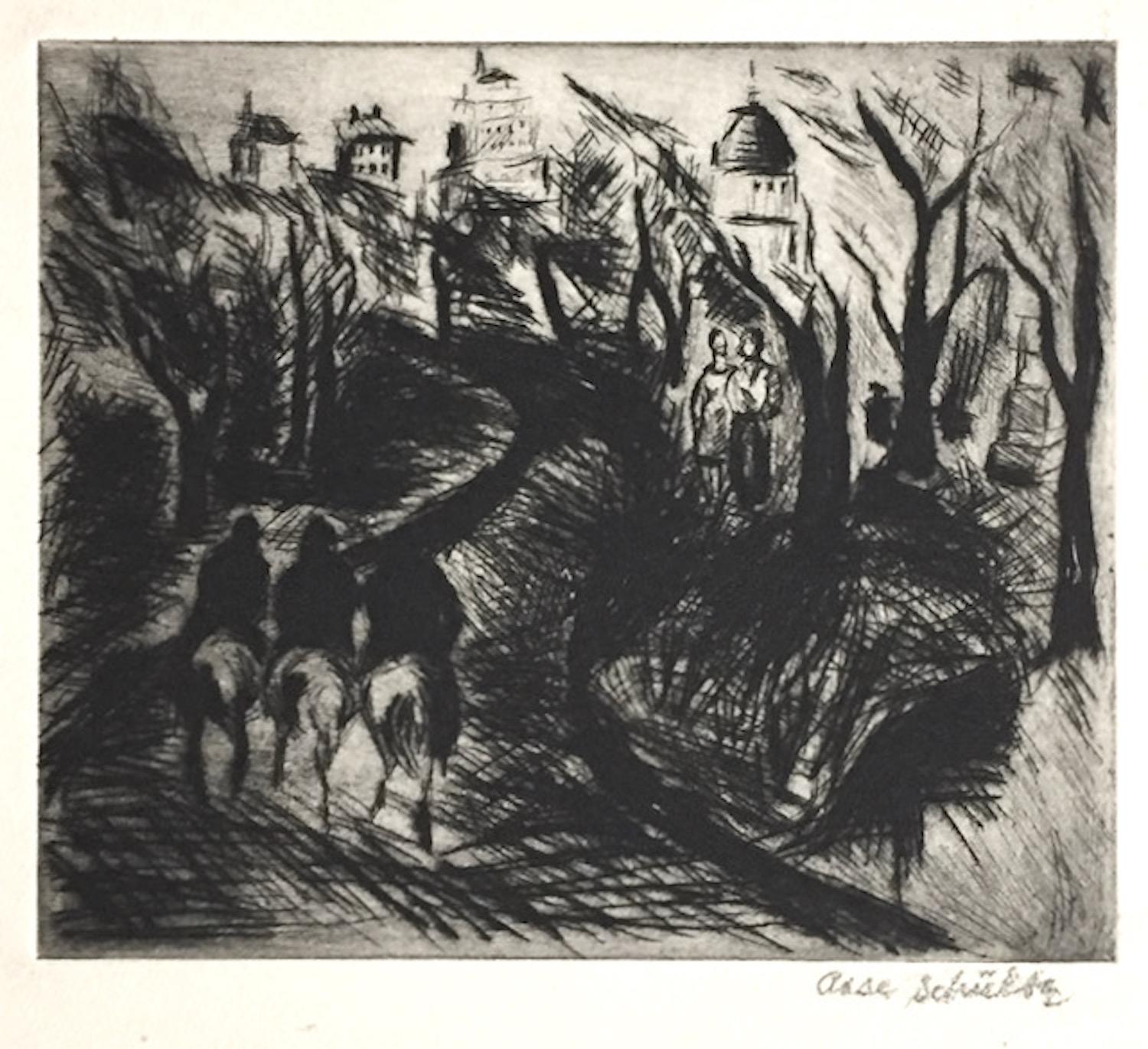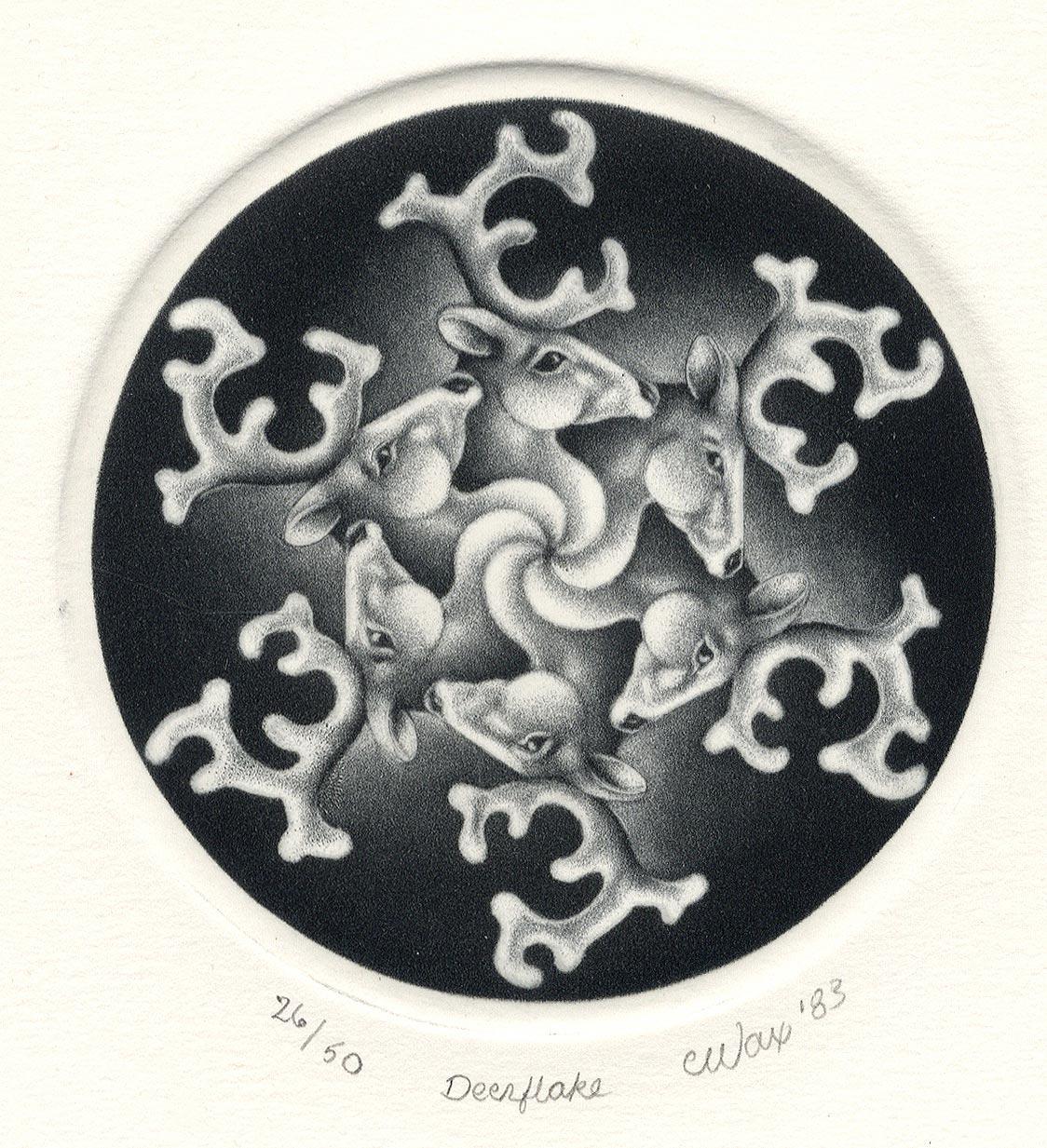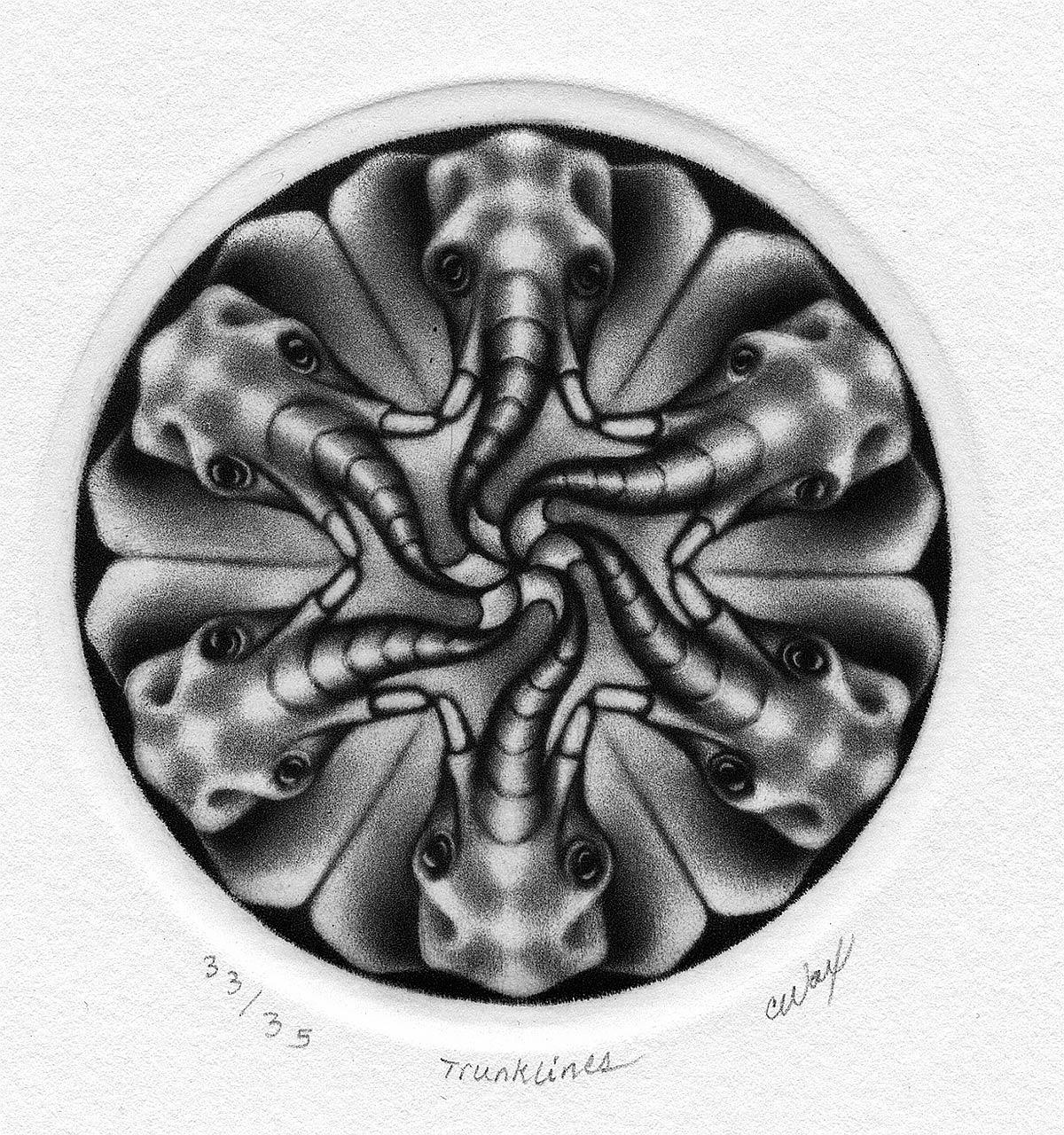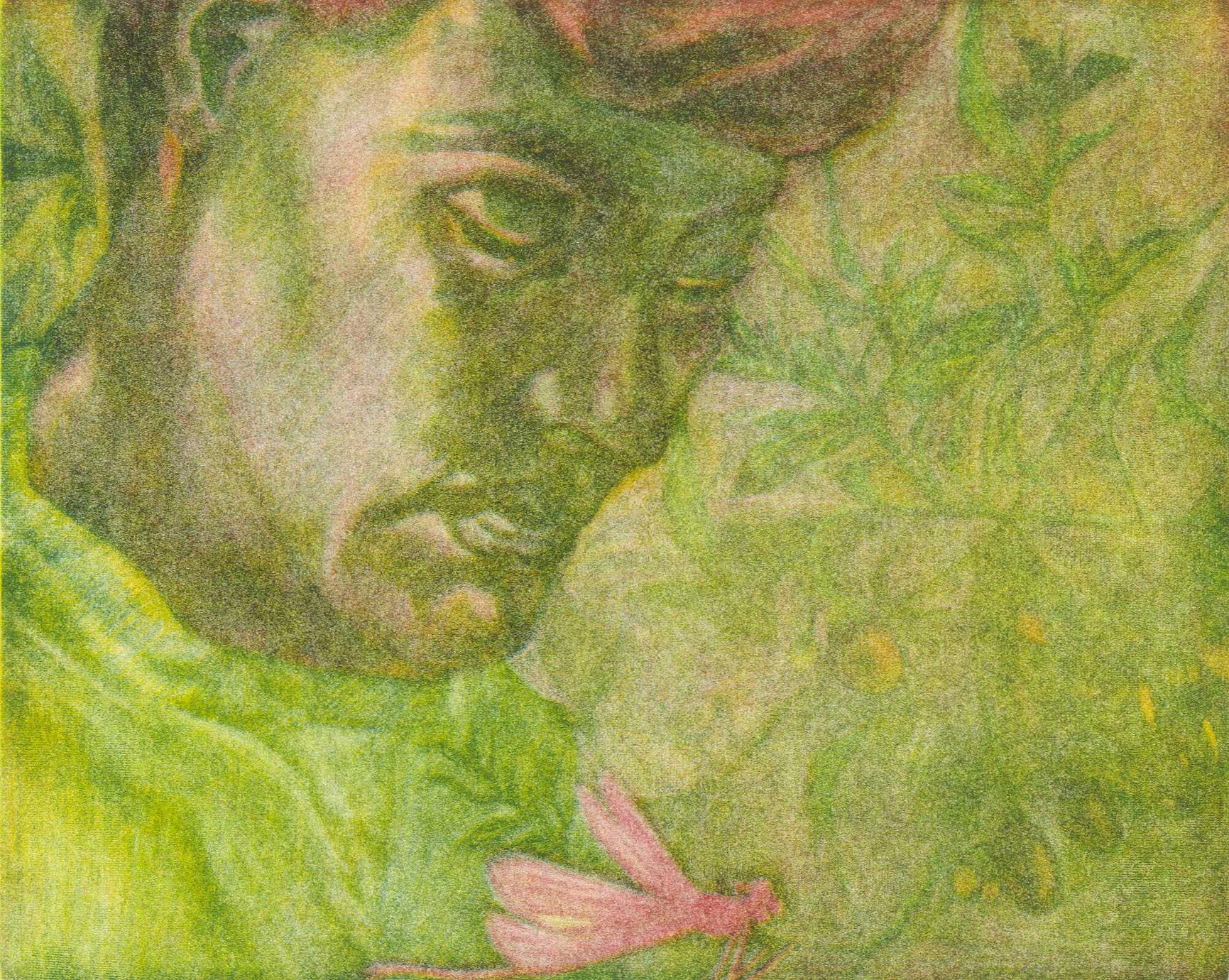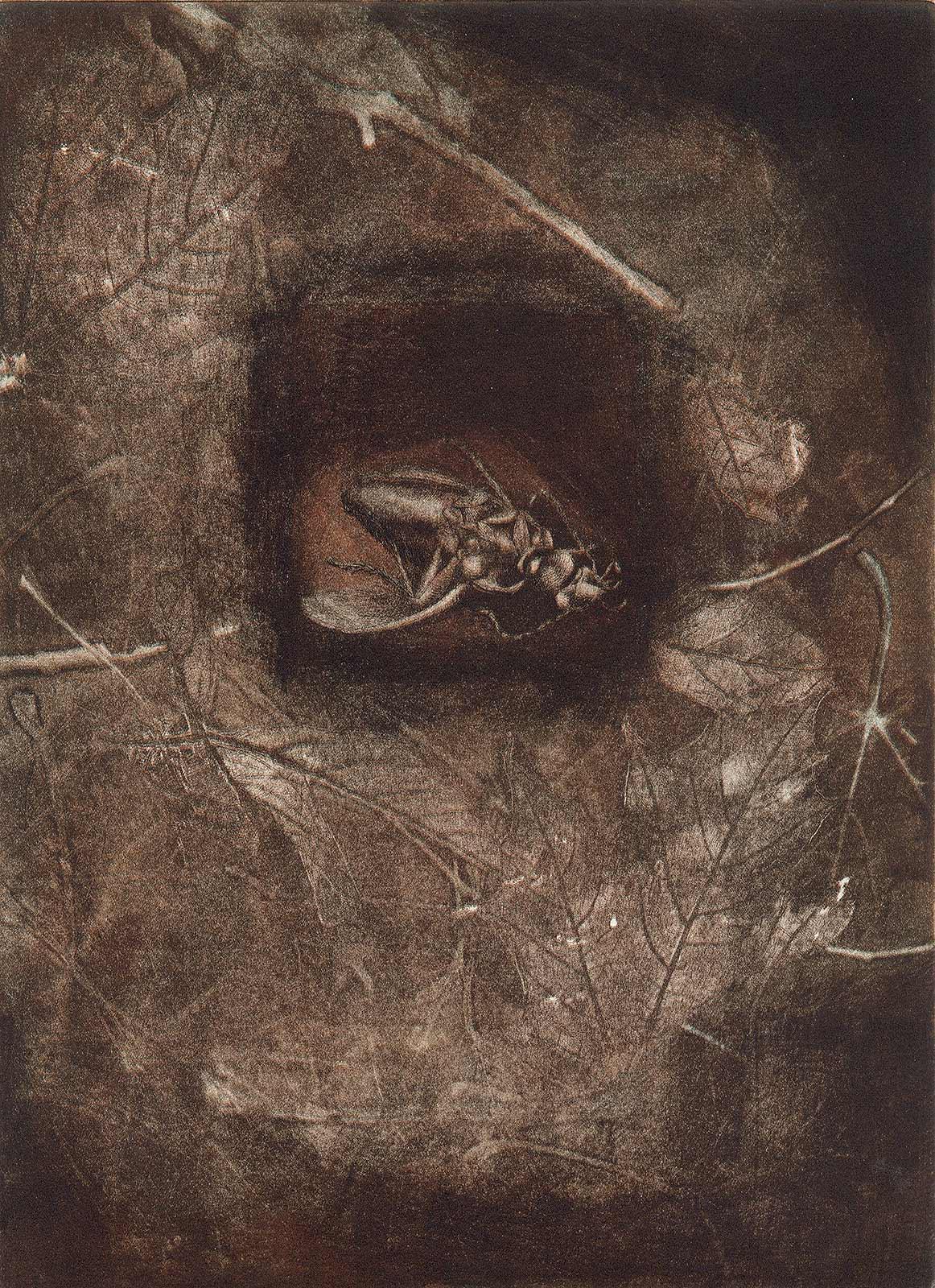Items Similar to Aardvark
Want more images or videos?
Request additional images or videos from the seller
1 of 7
Ray H. FrenchAardvark1951
1951
About the Item
Aardvark
Engraving, 1951
Signed, dated, titled in pencil by the artist (see photo)
Annotated "To Jon from Ray" (see photo)
Printed by Jon Clemens, Master Printer, c. 1990
Condition: Taper residue to margin edge
Image/Plate size: 8 x 15 inches
Sheet size: 13 x 20 inches
Provenance: Estate of the printer, Jon Clemens
Ray H. French: The Evolution of an Artistic Innovator
Printmaker, painter, and sculptor Ray H. French was born in Terre Haute, Indiana on May 16, 1919. Terre Haute was a cultural wasteland before the opening of the Sheldon Swope Art Museum in 1942. Thus, with a father as a coal miner and carpenter, art remained a luxury for Ray. Nevertheless, local art teachers Mabel Mikel Williams and Nola E. Williams helped to foster his creativity and unshakable drive to create things of beauty.
After high school, Ray attended the John Herron School of Art in Indianapolis. His studies there were interrupted by the outbreak of World War II, during which he developed surveillance photographs for the Army Air Force. After the war, Ray transferred to the University of Iowa on the G.I. Bill, where he received both his BFA and MFA degrees. The University of Iowa during the 1940s was a cultural mecca with many major art historians and artists. While in Iowa, Ray played an important role in this culture by becoming a founding member of the Iowa Print Group under Mauricio Lasansky.
Following his graduation in 1948, Ray experienced firsthand the rapid rise in creative printmaking in America. By 1949, he had exhibited at The Brooklyn Museum, the Walker Art Center, and MOMA New York. Ray’s early style of printmaking is characterized by pure line engraving on copper plates, a technique suited perfectly to his study of the beauty of animals. This charming and whimsical subject ran counter to the concurrent trends of Lasansky’s horrors of war and Hayter’s non-objectivity, but was equally effective in capturing the public’s attention. Walruses was purchased by the Victoria and Albert Museum, exhibited at MOMA New York and received the Arthur D. Allen Memorial Purchase Prize for its “skillful and economic use of line.” Shortly thereafter, Ray’s treatment of animals developed further into larger format mixed intaglio prints utilizing hard ground, soft ground, etching, and engraving, as exemplified in The Swan.
By the late 1950s, Ray’s style evolved into organic non-objectivity, in which he incorporated personal autobiographical vignettes and symbolism. His work during this time was further characterized by a departure from the traditional squared compositional format to his cutting and rounding of the plate to accentuate organic shapes. Ray’s 1959 Enchantment remains particularly illustrative of his use of etching and soft ground intaglio. Enchantment was successfully exhibited at the Brooklyn Museum of Art for the 12th National Print Exhibition of The American Federation of the Arts and received the Pennell Purchase Prize from the Library of Congress in 1960.
In the 1960s, Ray also started to focus on blind embossing, which he had first experimented with at the University of Iowa. He was extremely prolific and successful with this medium, selling hundreds of prints in small editions of 10 through the Associated American Artist Gallery in New York. In 1966, Ray built upon his mastery of embossing and began developing a shadow box presentation called a graphic construction that combined color, blind embossing, and multi-layered cutouts to revel intaglio compositions. Noted curator William Lieberman purchased Ray’s masterpiece graphic construction, Moon Rays, on the behalf of MOMA New York and another impression was gifted to the University of Iowa Museum of Art by Alan and Ann January in 2004.
Throughout his artistic career, Ray was also a professor and administrator at DePauw University, which occupied much of his time. Outside of his creative expression, Ray was most proud of his teaching and influencing students to find beauty in their daily lives. Specifically, he was a particularly fervent advocate of printmaking and joined the ranks of many of Lasansky’s students who went on to establish printmaking programs and departments and to further lift the stature of intaglio printmaking. During Ray’s time at DePauw, he received grants to travel around Europe. His yearlong stay in Florence led to a series of etchings, drypoints, and woodcuts of Italian and Etruscan subjects and provided inspiration for many years.
In 1984, Ray retired from his university service to work in a private studio behind his home on DePauw’s campus. After several life threatening illnesses, Ray decided to return to his early creative style of realist depictions of nature and landscape. Eventually, Ray’s health deteriorated further with the onset of macular degeneration. Legally blind, he continued to create art until shortly before his death in 2000 at the age of 80. “Sometimes when I look at a work I create, I am amazed at what inspired it. I ask myself, how on earth did I create this?” said Ray once. Ultimately, this quest to find beauty and create inspiring works of art provided the greatest source of Ray’s happiness and fulfillment, evidenced by the breadth and quality of his artistic legacy.
- Creator:Ray H. French (1919-2000, American)
- Creation Year:1951
- Dimensions:Height: 8 in (20.32 cm)Width: 15 in (38.1 cm)
- Medium:
- Movement & Style:
- Period:
- Condition:
- Gallery Location:Fairlawn, OH
- Reference Number:
About the Seller
5.0
Recognized Seller
These prestigious sellers are industry leaders and represent the highest echelon for item quality and design.
Platinum Seller
These expertly vetted sellers are 1stDibs' most experienced sellers and are rated highest by our customers.
Established in 1978
1stDibs seller since 2013
712 sales on 1stDibs
Typical response time: 1 hour
Associations
International Fine Print Dealers Association
- ShippingRetrieving quote...Ships From: Akron, OH
- Return PolicyA return for this item may be initiated within 10 days of delivery.
More From This SellerView All
- PorcupineBy Ray H. FrenchLocated in Fairlawn, OHPorcupine Engraving, 1949 Signed and dated lower right (see photo) Titled and numbered lower left (see photo) Created while the artist was completing the MFA in Printmaking at the Un...Category
1940s American Modern Animal Prints
MaterialsEngraving
- WalrusesBy Ray H. FrenchLocated in Fairlawn, OHWalruses Engraving, 1952 Signed, dated, titled and numbered (see photos) Edition: 100, this from the second printing with the artist's initials in an edition of 25 (16/25) Condition:...Category
1950s American Modern Animal Prints
MaterialsEngraving
- Vienna LipizzanerBy Ray H. FrenchLocated in Fairlawn, OHVienna Lipizzaner Engraving, 1962 Signed and dated lower right (see photo) Titled and numbered lower left (see photo) This impression is from the second edtition printed c. 1992 1st ...Category
1960s American Modern Animal Prints
MaterialsEngraving
- The SwanBy Ray H. FrenchLocated in Fairlawn, OHThe Swan Etching and soft ground intaglio, 1957 Signed and dated lower right (see photo) Titled and numbered lower left (see photo) From the second edition of 75 impressions, printed...Category
1950s American Modern Animal Prints
MaterialsIntaglio
- Animal Kingdom (Magnificent Jungle Cats)By Louise NevelsonLocated in Fairlawn, OHAnimal Kingdom (Magnificent Jungle Cats) Etching, 1953-1955 Signed and titled in pencil by the artist (see photos) Annotated: "First Proof" (see photo) Estate stamp verso (see photo)...Category
1950s American Modern Prints and Multiples
MaterialsEtching
- Before Day LightBy Paul H. WinchellLocated in Fairlawn, OHBefore Day Light Drypoint, c. 1940 Signed lower right (see photo) Titled lower left (see photo) Created while the artist was a commercial artist working in Minneapolis. In the 1930’s...Category
1940s American Realist Animal Prints
MaterialsDrypoint
You May Also Like
- A. Schultz, Riders in Central Park (New York City)Located in New York, NYSuch an innovative image on the classic 'Riders in the Park' theme! Further, the use of drypoint and the rather direct -- even aggressive -- drawing style, bring it into the German E...Category
1930s American Modern Landscape Prints
MaterialsDrypoint
- Deerflake (The artist's first work celebrating the Solstice / deer as snowflake)By Carol WaxLocated in New Orleans, LACarol Wax describes her circular images as "most often quasi abstract works that refer to ancient islamic designs using the shapes and attributes of animals, in this case the deer. T...Category
Late 20th Century American Modern Animal Prints
MaterialsMezzotint
- Trunk Lines (Interweaved faces, ears and the trunks of elephants form design)By Carol WaxLocated in New Orleans, LACarol Wax describes her circular images as "most often quasi abstract works that refer to ancient islamic designs using the shapes and attributes of animals, in this case the elephan...Category
1980s American Modern Animal Prints
MaterialsMezzotint
- Red Damsel (Human looks at small Tinker Bell like figure)By Lois WardLocated in New Orleans, LALois Ward's "Red Damsel" is a color mezzotint created in 1994 in a very small edition of just 10. This impression is #2 of 10. A young human figure in green gazes down on a Tinker B...Category
1990s American Modern Figurative Prints
MaterialsMezzotint
- Crushed Beetle / Fragile SeriesBy Lois WardLocated in New Orleans, LALois Ward created a Fragile Series of images including "Crushed Beetle" in 1990 in a very small edition of just 9. This impression is #1 of 9. Ward has always been concerned with t...Category
1990s American Modern Animal Prints
MaterialsMezzotint
- Birds of ParadigmBy Carol WaxLocated in New Orleans, LACarol Wax describes her circular images as "most often quasi abstract works that refer to ancient islamic designs using the shapes and attributes of animals, in this case the elephan...Category
1980s American Modern Animal Prints
MaterialsMezzotint
